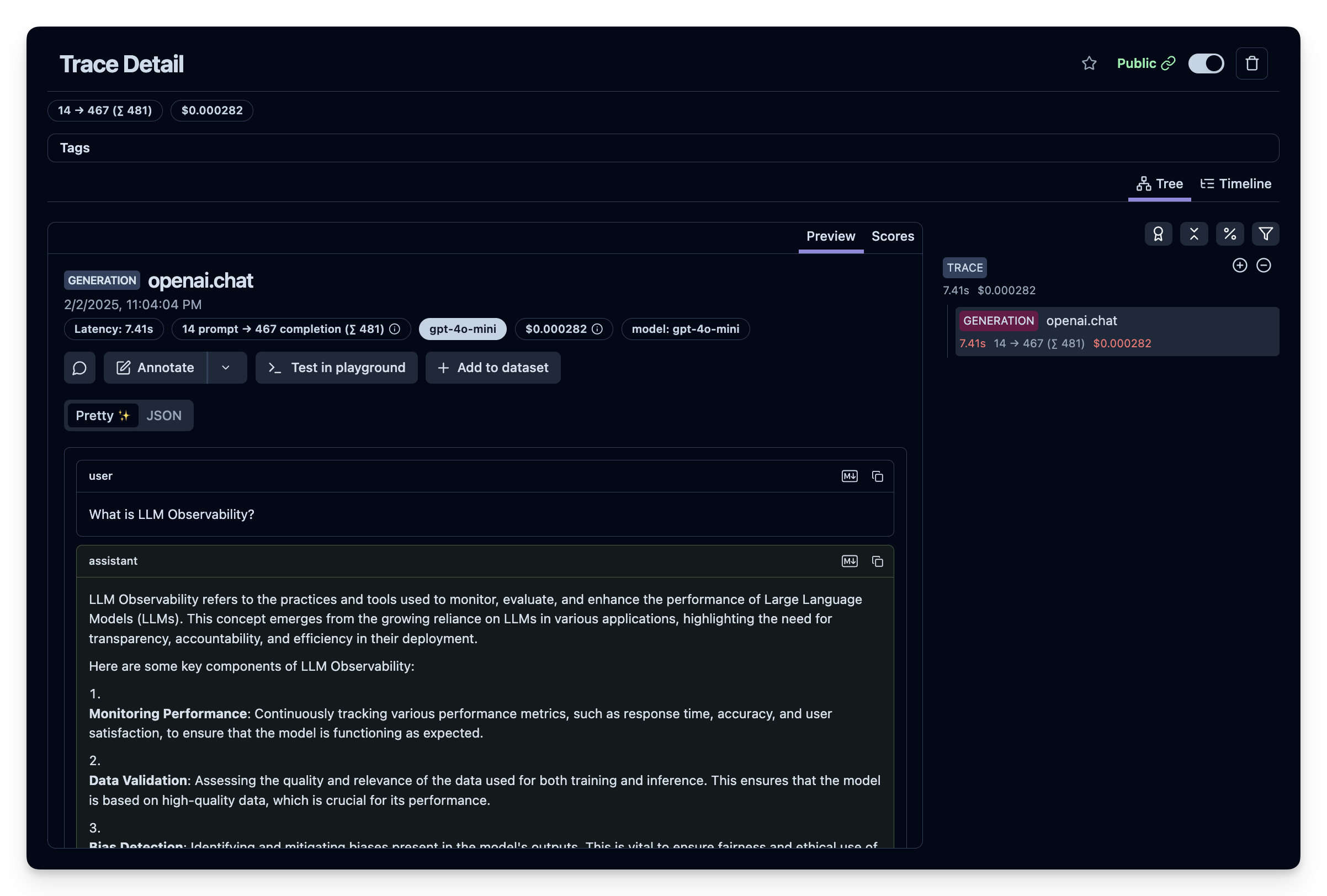OpenLIT Integration via OpenTelemetry
Langfuse is an OpenTelemetry backend, allowing trace ingestion from various OpenTelemetry instrumentation libraries. This guide demonstrates how to use the OpenLit instrumentation library to instrument a compatible framework or LLM provider.
Step 1: Install Dependencies
Install the necessary Python packages: openai, langfuse, and openlit. These will allow you to interact with OpenAI as well as setup the instrumentation for tracing.
%pip install openai langfuse openlitStep 2: Configure Environment Variables
Before sending any requests, you need to configure your credentials and endpoints. First, set up the Langfuse authentication by providing your public and secret keys. Then, configure the OpenTelemetry exporter endpoint and headers to point to Langfuse’s backend. You should also specify your OpenAI API key.
import os
import base64
LANGFUSE_PUBLIC_KEY = "pk-lf-..."
LANGFUSE_SECRET_KEY = "sk-lf-..."
LANGFUSE_AUTH = base64.b64encode(f"{LANGFUSE_PUBLIC_KEY}:{LANGFUSE_SECRET_KEY}".encode()).decode()
os.environ["OTEL_EXPORTER_OTLP_ENDPOINT"] = "https://cloud.langfuse.com/api/public/otel" # 🇪🇺 EU data region
# os.environ["OTEL_EXPORTER_OTLP_ENDPOINT"] = "https://us.cloud.langfuse.com/api/public/otel" # 🇺🇸 US data region
os.environ["OTEL_EXPORTER_OTLP_HEADERS"] = f"Authorization=Basic {LANGFUSE_AUTH}"
# Set your OpenAI API key.
os.environ["OPENAI_API_KEY"] = ""Explanation: This block configures the necessary environment variables. The Langfuse keys are combined and base64 encoded to form an authentication token that is then set in the OTLP headers. Additionally, the OpenTelemetry endpoint is provided to direct trace data to Langfuse’s backend.
Step 3: Initialize Instrumentation and make a Chat Completion Request
With the environment set up, import the needed libraries and initialize OpenLIT instrumentation. For this example, we will make a simple chat completion request to the OpenAI Chat API. This will generate trace data that you can later view in Langfuse’s observability dashboard.
from openai import OpenAI
import openlit
# Initialize OpenLIT instrumentation. The disable_batch flag is set to true to process traces immediately.
openlit.init(disable_batch=True)
# Create an instance of the OpenAI client.
openai_client = OpenAI()
# Make a sample chat completion request. This request will be traced by OpenLIT and sent to Langfuse.
chat_completion = openai_client.chat.completions.create(
messages=[
{
"role": "user",
"content": "What is LLM Observability?",
}
],
model="gpt-3.5-turbo",
)
print(chat_completion)Step 4: See Traces in Langfuse
You can view the generated trace data in Langfuse. You can view this example trace in the Langfuse UI.
